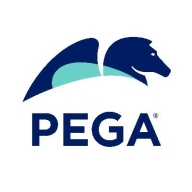

Pega Platform and Flowable compete in the business process management market. Pega Platform holds an advantage in scalability and automation capabilities, while Flowable shines with open-source flexibility and adaptability.
Features: Pega Platform stands out for process automation, AI-driven decision-making, and extensive integration capabilities. Its focus on enterprise solutions is evident. Flowable offers customizable workflow models and benefits from its open-source nature, providing flexibility and adaptability for diverse business needs.
Ease of Deployment and Customer Service: Flowable provides straightforward deployment due to its lightweight architecture, adaptable to various environments. Pega’s deployment involves more complex features, benefiting from extensive integration tools. Pega possesses well-structured customer support with extensive resources. Flowable relies on community-driven support along with professional services.
Pricing and ROI: Pega Platform indicates a higher initial setup cost reflecting its comprehensive offerings, with enterprises often finding ROI substantial through efficiency and scalability. Flowable’s open-source model leads to lower initial costs, offering favorable ROI via its adaptable business process structure. The key difference is Pega’s upfront investment for robust solutions versus Flowable’s cost-effectiveness for tailored operations.
| Product | Market Share (%) |
|---|---|
| Pega Platform | 6.3% |
| Flowable | 6.4% |
| Other | 87.3% |


| Company Size | Count |
|---|---|
| Small Business | 9 |
| Midsize Enterprise | 15 |
| Large Enterprise | 68 |
Flowable is a versatile software that streamlines and automates business processes. It is commonly used for workflow management, task automation, and digital transformation initiatives.
Users also utilize Flowable for document management, case management, and customer journey mapping. Its valuable features include efficient workflow management, seamless integration capabilities, and a user-friendly interface.
Flowable allows for smooth collaboration and task automation, and its ability to integrate with other systems and applications enables a seamless flow of information.
The intuitive and easy-to-use interface makes it accessible to users of all technical backgrounds.
Pega Platform facilitates business process management, case management, and workflow automation for industries like banking, insurance, and healthcare. It supports digital transformation and customer service enhancements with its low-code capabilities and seamless integrations.
Pega Platform enables users to create efficient systems for case management, financial operations, and digital transformations. It provides tools for client onboarding, quoting, claims processing, customer experience improvements, and content management. Pega's low-code approach allows for the automation of complex processes, making it suitable for enterprises looking for adaptability and rapid deployment. While it offers strong real-time analytics and decision automation, users acknowledge challenges in user interface, integration, and performance aspects. High costs and a learning curve need attention, and enhancements in AI features and cloud services are desired.
What are the key features of Pega Platform?In banking, Pega Platform automates loan processing, accelerates customer onboarding, and manages compliance. Insurance companies benefit from streamlined claims processing and policy management. Healthcare sectors use the platform for patient engagement and care coordination, enabling organizations to adapt quickly to changing industry requirements.
We monitor all Process Automation reviews to prevent fraudulent reviews and keep review quality high. We do not post reviews by company employees or direct competitors. We validate each review for authenticity via cross-reference with LinkedIn, and personal follow-up with the reviewer when necessary.